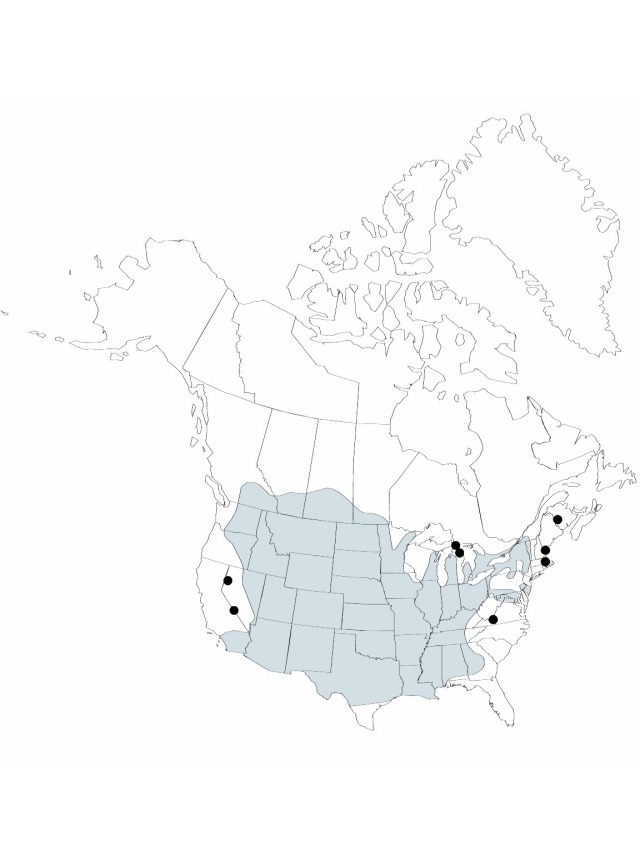Juncus torreyi
Bulletin of the Torrey Botanical Club 22:303. 1895.
Herbs, perennial, rhizomatous, (3–) 4–10 dm. Rhizomes 1–3 mm diam., with swollen nodes. Culms erect, terete, 3–5 mm diam., smooth. Cataphylls 0. Leaves: basal 1–3, cauline 2–5, auricles 1–4 mm, apex rounded, scarious; blade strawberry-colored, green, or pink, terete, 13–30 cm × 1–5 mm. Inflorescences terminal clusters of 1–23 heads or single heads, 2–5.5 cm, branches spreading; primary bract erect to ascending; heads 25–100-flowered, globose, 10–15 mm diam. Flowers: tepals green to straw-colored, occasionally reddish, lanceolate-subulate; outer tepals (3.7–) 4–6 mm, apex acuminate; inner tepals (3–) 3.4–4.6 mm, apex acuminate; stamens 6, anthers 1/2 filament length. Capsules equaling perianth or slightly exserted, straw-colored or chestnut-brown, 1-locular, lance-subulate, 4.3–5.7 mm, apex tapering to subulate tip, valves separating at dehiscence, fertile throughout or only proximal to middle. Seeds oblong to ellipsoid, 0.4–0.5 mm, not tailed; body clear yellowbrown. 2n = 40.
Phenology: Fruiting early summer–fall.
Habitat: Wet sandy shores, edges of sloughs, along slightly alkaline watercourses, swamps, sometimes on clay soils, calcareous wet meadows, and alkaline soils
Elevation: 0–600
Distribution

Alta., B.C., Man., N.B., Ont., Que., Sask., Ala., Ariz., Ark., Calif., Colo., Ga., Idaho, Ill., Ind., Iowa, Kans., Ky., La., Maine, Md., Mass., Mich., Minn., Miss., Mo., Mont., Nebr., Nev., N.H., N.J., N.Mex., N.Y., N.Dak., Ohio, Okla., Oreg., Pa., S.Dak., Tenn., Tex., Utah, Vt., Va., Wash., W.Va., Wis., Wyo., Mexico (Baja California), Mexico (probably elsewhere in n Mexico)
Discussion
Selected References
None.
Lower Taxa
"dm" is not declared as a valid unit of measurement for this property.
